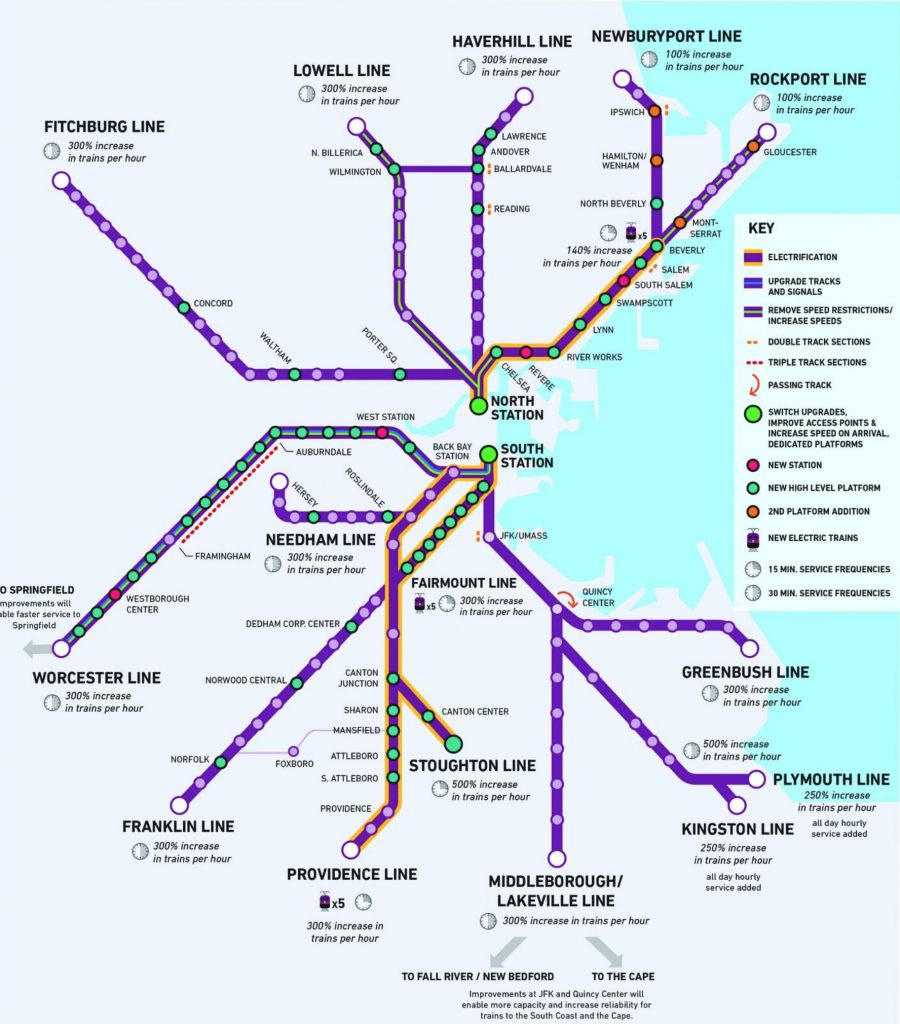The alliteration failed at that last word, but it gets the point across. No mater how you may want to define infrastructure, the term always includes transit. In the Boston Globe, an opinion piece proposed how the city and region of Boston could improve upon the city’s mass transit options.
And they made a map.

The map is an interesting one. It uses thick purple lines to indicate the commuter rail branches—not the metro/subway lines. The problem is that the outside of those lines then encodes the suggested improvements. An orange outline indicates where tracks should be electrified—Boston still uses diesel engines for some of its commuter rail transit. But the problem is that the dark purple dominates the graphic. If, however, the purple were entirely replaced by an orange line, it would be clearer that the Providence needs electrification. (It’s actually already electrified, as that’s the same line Amtrak uses, but Boston’s transit service still uses diesel engines on the line.)
Similarly, the key to indicate upgraded tracks and signals is a blue line of similar “colour” to the purple. That makes it hard to distinguish between the two, especially when next to the green inline option, representing increased speeds.
The key flaw? A long-time wish for Boston transit lovers (or haters). Note how the system is divided into two, the two main hubs, South Station and North Station, do not connect. Connecting the two will require billions of dollars. But the benefits can be tremendous.
Philadelphia, for example, for decades had two rail hubs: Broad Street Station across from City Hall and Reading Terminal several blocks east along Market Street. Reading Terminal was the terminus for the Reading Railroad and Broad Street Station for the Pennsy, or Pennsylvania Railroad. In 1930, Broad Street Station was replaced by an underground station, today’s Suburban Station. But it would not be until 1984 when rail tunnels would finally be opened linking the western/southern Pennsylvania Railroad lines to the northern lines of Reading. But today you can take a train from a southwest suburb to the far northern suburbs without changing trains because of that connection.
Credit for the piece goes to TransitMatters.
